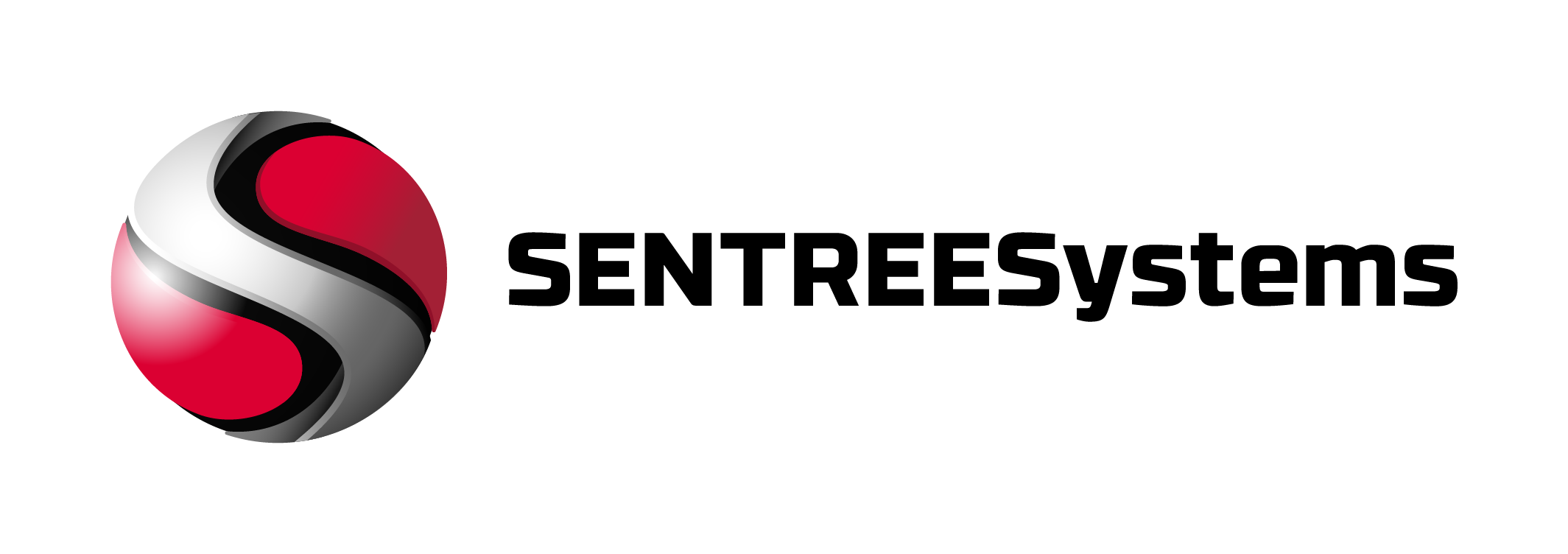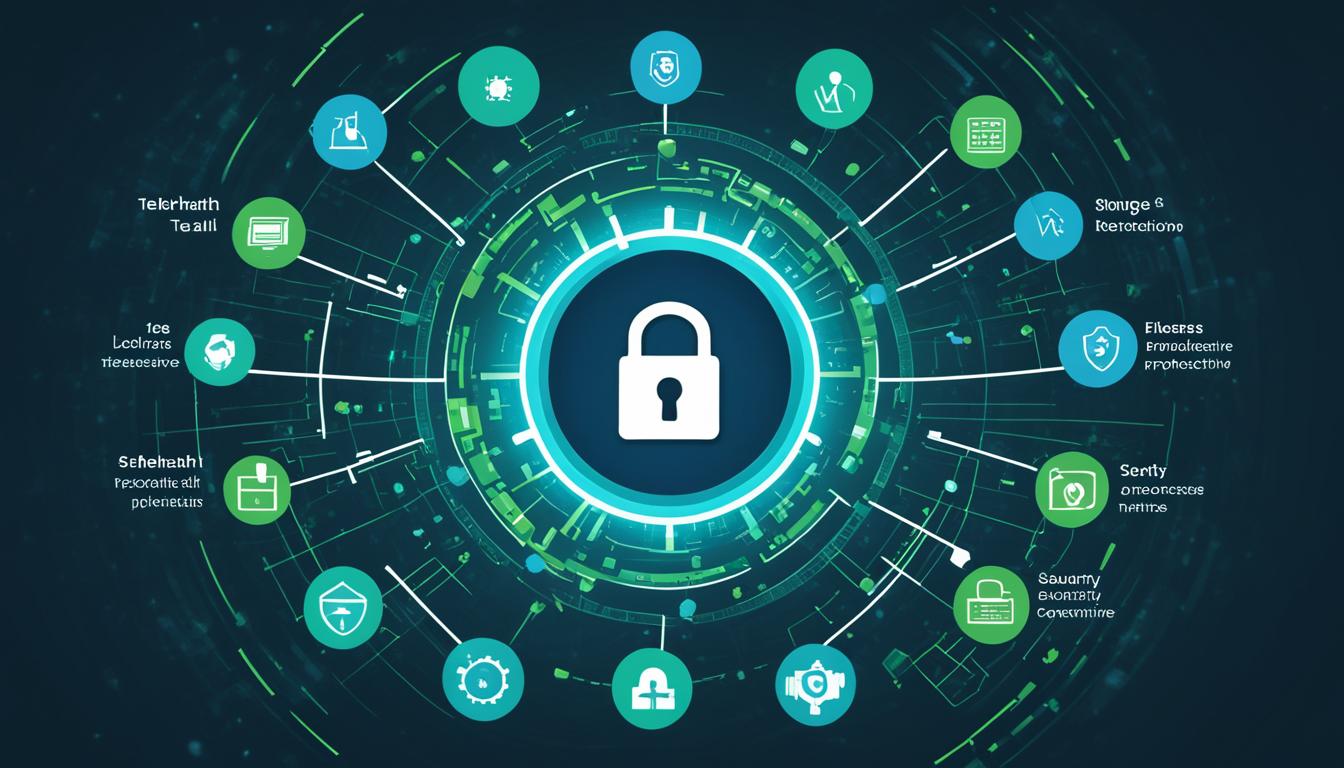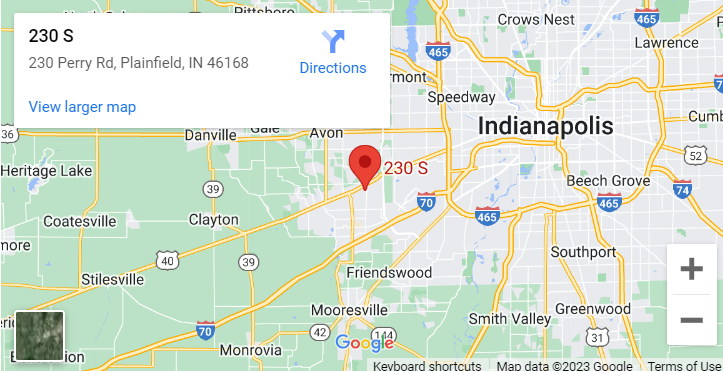Hello there! In today’s digital age, telehealth has revolutionized the way we receive healthcare. With the convenience of online visits, it’s essential to prioritize the security of patient data. In this article, I will discuss the risks involved in telehealth and provide you with best practices to ensure the safety of your patients’ sensitive information. So, let’s dive in and explore the world of telehealth cybersecurity!
Key Takeaways:
- Implement strong encryption and access controls to protect patient data.
- Adhere to HIPAA compliance regulations to safeguard privacy and security.
- Educate patients about data security and password best practices.
- Choose telehealth platforms that prioritize cybersecurity measures.
- Stay updated on technological advancements for enhanced data security.
Risks in Telehealth
While telehealth offers numerous benefits, it also introduces several cybersecurity risks that healthcare organizations must address to safeguard patient data. Unauthorized access to patient records, data breaches, malware and ransomware attacks, phishing attacks, privacy concerns, unsecured communication, limitations in data storage and access, reliance on third-party vendors, and regulatory challenges are among the key vulnerabilities that need attention.
Unauthorized Access to Patient Records
One of the primary risks in telehealth is unauthorized access to patient records. Without proper security measures in place, sensitive information can be compromised, leading to potential privacy breaches and misuse of personal data.
Data Breaches and Malware Attacks
Data breaches pose a significant threat to telehealth systems. Cybercriminals can exploit vulnerabilities in network infrastructure and gain access to sensitive data. Additionally, malware and ransomware attacks can encrypt data or hold it hostage, causing substantial disruptions and financial losses to healthcare providers.
Phishing Attacks
Phishing attacks, which involve tricking individuals into revealing private information, are also a concern in telehealth. Both healthcare providers and patients may fall victim to deceptive emails or messages that appear legitimate, leading to the disclosure of sensitive data.
Privacy Concerns
The sharing of sensitive patient information without authorization is a privacy concern in telehealth. It is essential to establish robust privacy protocols to prevent unauthorized disclosure or use of patient data, maintaining the trust and confidentiality of healthcare interactions.
Unsecured Communication
Unsecured communication channels can expose patient data to interception or unauthorized access. Healthcare organizations must ensure that all communication channels, including video conferencing and messaging platforms, have appropriate encryption and security measures in place.
Data Storage and Access Challenges
The storage and access of patient data present challenges in telehealth. Healthcare providers need secure systems that enable efficient data storage, retrieval, and sharing while maintaining stringent security measures to protect patient confidentiality.
Third-Party Vendors
Telehealth often relies on various third-party vendors, increasing the potential for cybersecurity risks. Healthcare organizations must carefully select and vet vendors to ensure they have adequate data protection measures in place and comply with applicable regulations.
Regulatory Challenges
The regulatory landscape surrounding telehealth adds to the cybersecurity challenges. Adhering to specific laws and regulations, such as HIPAA, while leveraging the benefits of telehealth can be complex and requires ongoing efforts to navigate changing regulatory requirements.
HIPAA Compliance in Telehealth
HIPAA compliance plays a crucial role in ensuring the protection of patient data in telehealth. It is vital for telehealth platforms to adhere to the regulations set by the Department of Health and Human Services (HHS) and enforced by the Office for Civil Rights (OCR).
To achieve HIPAA compliance, telehealth platforms must implement various security measures. One of the key requirements is the use of end-to-end encryption to safeguard patient information during transmission. This ensures that data remains confidential and protected from unauthorized access.
In addition to encryption, secure data storage is essential to meet HIPAA regulations. Telehealth platforms must adopt robust mechanisms for secure data storage to prevent data breaches and unauthorized disclosure.
Furthermore, multi-factor authentication is a crucial element of HIPAA compliance. This authentication method adds an additional layer of security by requiring users to provide multiple credentials to access sensitive patient data.
HIPAA security rules focus on safeguarding the privacy, security, and integrity of protected health information. By complying with these rules, telehealth platforms can ensure that patient data is handled in a secure and confidential manner.
Staying abreast of changing regulations and health laws is paramount in maintaining HIPAA compliance in telehealth. With advancements in technology and evolving privacy concerns, telehealth platforms must continuously evaluate and update their security measures to meet the latest standards.
Navigating international data transfer challenges is another aspect that healthcare organizations must address to maintain HIPAA compliance. Adequate measures should be implemented to protect patient data when transmitted or accessed outside the United States.
Importance of Educating Patients
Educating patients about data security is a crucial step in protecting their personal health information. To ensure the safety of their sensitive data, patients should follow password best practices, practice safe website usage, and choose the right telehealth platform.
Password Best Practices
Creating strong and unique passwords is key to safeguarding patient data. Encourage patients to:
- Use a combination of upper and lowercase letters, numbers, and special characters
- Avoid using easily guessable information, such as their name, birthdate, or address
- Regularly change passwords and avoid reusing them across different platforms
- Not save passwords on shared devices
Safe Website Usage
Patients should be aware of the importance of using safe, officially recognized websites to log into their healthcare accounts. Emphasize the following:
- Always verify the URL before entering login credentials
- Look for HTTPS at the beginning of the website address to ensure a secure connection
- Avoid clicking on suspicious links or downloading files from unknown sources
- Be cautious of phishing attempts and never share personal information through email
Choosing the Right Telehealth Platform
Selecting a telehealth platform that prioritizes data security is essential. Patients should consider the following:
- Ensure the telehealth platform is compliant with regulatory standards, such as HIPAA
- Look for platforms that use encryption to protect data during transmission
- Verify if the platform has built-in access controls and user authentication measures
- Consider platforms that offer secure and private communication channels
By educating patients on Telehealth Cybersecurity Best Practices, healthcare organizations can empower individuals to actively contribute to data security in telehealth.
“Education is the key to empowering patients and protecting their personal health information in the world of telehealth. By providing patients with the knowledge and tools to navigate data security risks, we can create a safer healthcare environment for all.”
Access Controls in Telehealth
Access controls play a crucial role in ensuring the security and privacy of sensitive patient data in telehealth. By implementing effective access control measures, healthcare organizations can ensure that only authorized users have appropriate access rights. This section explores the key aspects of access controls in telehealth, including user permissions, role-based access, the principle of least privilege, system access monitoring, and user activity audits.
User Permissions and Role-Based Access
Assigning user permissions based on job roles is a fundamental practice in maintaining data security. By defining specific roles and associated access rights, healthcare organizations can regulate the level of data access each user has. Role-based access ensures that users are only granted the privileges necessary to fulfill their responsibilities, minimizing the risk of unauthorized access.
Principle of Least Privilege
The principle of least privilege is a cornerstone of access control. It states that users should be granted the minimum privileges required to perform their tasks effectively. By limiting access rights to only what is necessary, organizations can reduce the potential impact of a security breach. Adhering to the principle of least privilege helps create a more secure environment for patient data.
System Access Monitoring
Continuous monitoring of system access is essential for identifying and preventing unauthorized use of patient data. By tracking user logins, activities, and data access patterns, organizations can quickly detect any suspicious behavior and take appropriate action. System access monitoring acts as a proactive measure to mitigate the risk of unauthorized access or data breaches.
User Activity Audits
User activity audits provide a comprehensive view of the actions performed by users within the system. These audits can help identify any potential security issues, policy violations, or anomalies in user behavior. By conducting regular user activity audits, healthcare organizations can maintain data integrity and ensure compliance with security protocols.
Overall, access controls in telehealth are vital for safeguarding sensitive patient data. By implementing user permissions, role-based access, the principle of least privilege, system access monitoring, and user activity audits, healthcare organizations can establish a robust security framework and minimize the risk of unauthorized access or data breaches.
Technological Solutions for Data Security
In the rapidly expanding field of telehealth, ensuring data security is of utmost importance. With the increasing reliance on digital platforms to deliver healthcare services, robust technological solutions are essential to protect patient information and maintain confidentiality.
The Role of VPNs in Telehealth
One of the key technological solutions for telehealth data security is the implementation of Virtual Private Networks (VPNs). VPNs create a secure and encrypted connection between healthcare providers and patients, allowing for safe communication and data transmission.
By routing data through a private network, VPNs protect sensitive patient information from unauthorized access and potential cyber threats. This is particularly crucial when transmitting healthcare data over public networks.
Compliance with Data Protection Regulations
Adherence to data protection regulations, such as the Health Insurance Portability and Accountability Act (HIPAA), is vital in telehealth settings. HIPAA sets guidelines and standards for safeguarding patient data, ensuring its confidentiality, integrity, and availability.
Telehealth platforms must comply with HIPAA regulations to protect patient privacy and security. This includes implementing measures such as end-to-end encryption, secure data storage, and multi-factor authentication to prevent unauthorized access to patient information.
The Role of AI in Data Security
Artificial Intelligence (AI) is becoming increasingly important in telehealth data security. AI-powered solutions can automatically detect and identify potential threats, helping healthcare organizations proactively defend against cyber attacks.
AI algorithms can analyze vast amounts of data to identify patterns and anomalies, allowing for early detection of security breaches. This helps in predicting risks and taking proactive measures to strengthen data security in telehealth.
Strengthening Data Codes and Secure Data Transmission
Technological advancements are continuously being made to strengthen data codes and ensure secure data transmission in telehealth. Encryption algorithms are constantly evolving to provide stronger protection against unauthorized access and data breaches.
Efforts are also being made to find safer ways to transmit information, minimizing the risk of interception or tampering. This includes exploring innovative encryption methods and secure protocols to enhance the security of telehealth data transmission.
| Benefits of Technological Solutions for Data Security |
|---|
| Protection against unauthorized access |
| Safeguarding patient information |
| Ensuring compliance with data protection regulations |
| Automated threat detection and risk prediction |
| Enhanced encryption and secure data transmission |
Implementing these technological solutions strengthens telehealth data security, providing healthcare organizations and patients with peace of mind. By employing VPNs, complying with data protection regulations, harnessing the power of AI, and strengthening data codes, the privacy and confidentiality of patient information can be safeguarded in the ever-evolving field of telehealth.
Ensuring Privacy and Security in Telehealth Interactions
When it comes to telehealth interactions, privacy and security should be the top priorities. Protecting patient information from unauthorized access is crucial. To achieve this, healthcare organizations must adhere to HIPAA compliance standards, implement secure communication channels, and prioritize data protection. Additionally, utilizing effective cybersecurity mitigation strategies is essential. By taking these steps, the privacy and security of telehealth interactions can be ensured.
An important aspect of maintaining privacy and security in telehealth is adhering to HIPAA compliance requirements. The Health Insurance Portability and Accountability Act (HIPAA) sets standards for safeguarding patient data in the healthcare industry. By following HIPAA regulations, healthcare organizations can ensure that patient information is protected from unauthorized access or disclosure.
Implementing secure communication channels is another critical factor in telehealth privacy and security. Utilizing encrypted communication channels, such as secure video conferencing platforms, helps safeguard patient data during virtual consultations. Encryption ensures that the information exchanged between healthcare providers and patients remains confidential and cannot be intercepted by unauthorized individuals.
Data protection is paramount in telehealth interactions. Healthcare organizations must prioritize secure storage and handling of patient data. This includes implementing robust access controls, such as user authentication and role-based permissions, to limit access to sensitive information. Regularly updating access privileges and conducting user activity audits are essential for maintaining data security.
Employing cybersecurity mitigation strategies is necessary to protect against potential risks in telehealth. These strategies involve measures like using firewalls, antivirus software, and intrusion detection systems to detect and prevent cyber threats. Regular training and awareness programs for healthcare staff can help them identify and report suspicious activities and potential cybersecurity breaches.
Ensuring privacy and security in telehealth interactions is a shared responsibility among healthcare organizations, healthcare providers, and patients. By adhering to HIPAA compliance, implementing secure communication channels, protecting patient data, and employing cybersecurity mitigation strategies, the confidentiality and integrity of patient information can be preserved in the telehealth ecosystem.
| Privacy and Security Measures | Benefits |
|---|---|
| Adherence to HIPAA compliance | Protects patient information from unauthorized access |
| Implementation of secure communication channels | Safeguards patient data during virtual consultations |
| Data protection through access controls | Limits access to sensitive information and ensures secure storage |
| Cybersecurity mitigation strategies | Detects and prevents cyber threats |
Training Healthcare Workers on Data Security
Training healthcare workers on data security is crucial to ensure the privacy and security of patient information. In today’s digital age, where cybersecurity risks are prevalent, it is essential for healthcare professionals to understand the importance of keeping data private and secure.
During training sessions, healthcare workers should be educated about the potential risks of data leaks and the consequences they may have on both patients and the healthcare organization. By emphasizing the importance of data security, healthcare professionals can become more vigilant in safeguarding patient information.
The training program should cover various aspects of data security, including safe handling of data and the proper use of telehealth software. Healthcare workers should be educated on the importance of adhering to regulatory standards such as HIPAA and GDPR to ensure compliance and protect patient privacy.
“Data security training is the foundation of creating a safe work culture where every employee understands their role in keeping patient data safe.”
Creating a safe work culture is crucial in Telehealth Cybersecurity Best Practices and promoting data security within healthcare organizations. This involves fostering an environment where all staff members are actively engaged in maintaining data security and prioritize patient privacy.
By implementing regular training sessions and refresher courses, healthcare workers can stay up to date with the latest cybersecurity best practices and strategies. This ongoing education ensures that they are equipped with the knowledge and skills necessary to mitigate cybersecurity risks effectively.
When healthcare workers are well-trained in data security, they can confidently navigate the use of telehealth software and handle sensitive patient information securely. This ultimately contributes to a more resilient healthcare system that prioritizes patient privacy and enhances overall trust in telehealth services.
In conclusion, training healthcare workers on data security is a fundamental step in creating a safe work culture and protecting patient information. By providing comprehensive training programs that cover data handling, telehealth software usage, and compliance with regulations like HIPAA and GDPR, healthcare organizations can strengthen their data security practices and mitigate cybersecurity risks.
Conclusion
Telehealth Cybersecurity Best Practices is the first step in protecting patient data in telehealth is of utmost importance. To ensure the privacy and security of sensitive information, healthcare organizations should implement best practices that encompass strong encryption methods, robust access controls, and secure communication channels.
Adopting encryption techniques such as end-to-end encryption helps safeguard patient data during transmission and storage. It ensures that only authorized individuals can access and decipher the information, mitigating the risk of unauthorized access.
In addition to encryption, implementing strict access controls is vital. Role-based access and the principle of least privilege ensure that healthcare professionals only have access to the specific data necessary for their responsibilities. Regular monitoring and user activity audits further enhance security by detecting and preventing unauthorized use.
Moreover, healthcare organizations must prioritize training their personnel on data security best practices. By educating healthcare professionals about telehealth data security risks and proper handling of patient data, organizations create a knowledgeable workforce that contributes to a safe work culture. Staying up to date with technological advancements enables healthcare organizations to leverage the latest security measures and mitigate emerging threats.
FAQ
What are the risks in Telehealth Cybersecurity Best Practices?
The risks in telehealth include unauthorized access to patient records, data breaches, malware and ransomware attacks, phishing attacks, privacy concerns, unsecured communication, difficulties in data storage and access, third-party vendor vulnerabilities, and regulatory challenges.
How can healthcare organizations ensure HIPAA compliance in telehealth?
Healthcare organizations can ensure HIPAA compliance in telehealth by implementing end-to-end encryption, secure data storage, and multi-factor authentication. They should also adhere to health laws, navigate international data transfer challenges, and stay up to date with changing regulations.
Why is it important to educate patients about data security in telehealth?
Educating patients about data security in telehealth is important to ensure they follow best practices such as creating strong passwords, using safe websites, logging out after each session, and choosing telehealth platforms that comply with regulatory standards like HIPAA.
What role do access controls play in telehealth?
Access controls in telehealth ensure that only authorized users can access sensitive patient data. This includes assigning user permissions based on job roles, implementing the principle of least privilege, regularly updating access privileges, monitoring system access through user activity audits, and revoking access for users who no longer need it.
What technological solutions are essential for telehealth data security?
Essential technological solutions for telehealth data security include using VPNs (Virtual Private Networks) for secure communication and data transmission, complying with data protection regulations like HIPAA, leveraging AI (Artificial Intelligence) for threat detection and risk prediction, strengthening data codes, and finding safer ways to send information.
How can privacy and security be ensured in telehealth interactions?
Privacy and security in telehealth interactions can be ensured by adhering to HIPAA compliance, implementing secure communication channels, protecting patient data, and utilizing cybersecurity mitigation strategies.
Why is training healthcare workers on data security crucial in telehealth?
Training healthcare workers on data security is crucial in telehealth to ensure they understand the importance of keeping data private and secure. They should be knowledgeable about the risks of data leaks, the safe handling of data, proper use of telehealth software, and adherence to regulations like HIPAA and GDPR. Creating a safe work culture that emphasizes data security is also important.
How can healthcare organizations protect patient data in telehealth?
Healthcare organizations can protect patient data in telehealth by embracing strong encryption methods, implementing robust access controls, utilizing secure communication channels, providing training on data security, and staying up to date with technological advancements.



